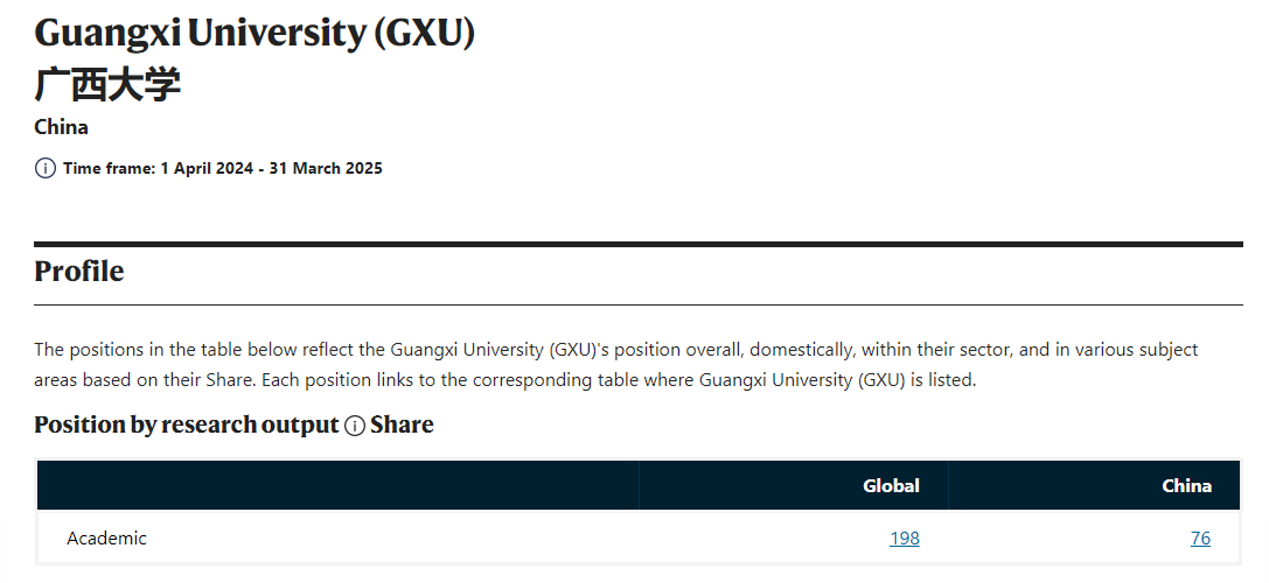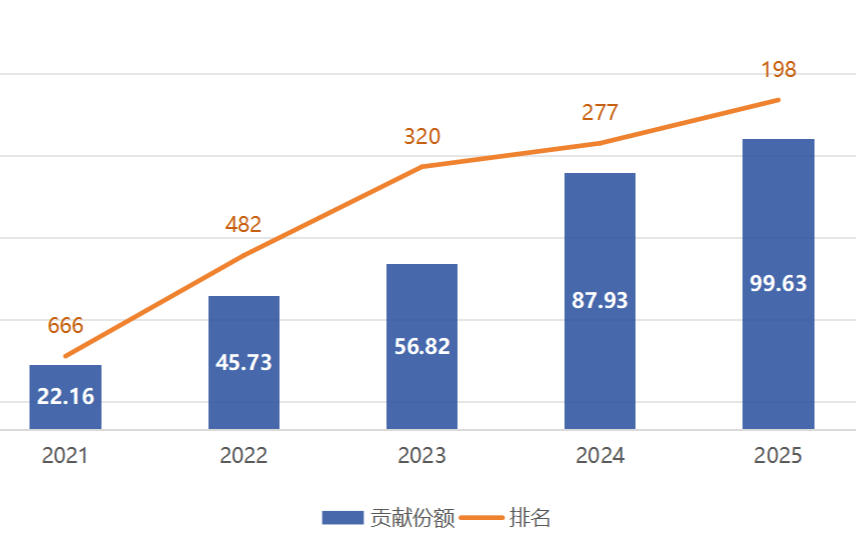Guangxi University achieved a historic milestone in the latest Nature Index rankings (April 2024-March 2025), debuting in the global top 200 at 198 worldwide and ranking 76 among mainland Chinese universities. This represents a 468-position leap from its 2021 global standing (666), demonstrating accelerated research strength in natural sciences.


The Nature Index Share measures an institution's fractional contribution to articles in selected journals during a specific period, serving as the core metric for quantifying research impact in the Nature Index.
The improvement in the Nature Index is a significant manifestation of the effectiveness of GXU's "Double First-Class" construction. In recent years, GXU has anchored itself to the goals of "Double First-Class" construction, focused on major national strategic needs and disciplinary frontiers, deeply implemented the "Ten Major Projects for Creating Comprehensive Excellence" and ten innovative measures, coordinated the integrated reform of the education-science-technology-talent system and mechanism, vigorously promoted interdisciplinary integration, optimized resource coordination and allocation, formed high-level scientific and technological innovation teams, and strived to build a three-tiered (national-provincial-university level) scientific research platform matrix. It has strengthened organized scientific research, continuously stimulated scientific and technological innovation vitality, and achieved a series of breakthrough results in multiple disciplines. Currently, 12 disciplines including Engineering, Materials Science, Agricultural Sciences, Plant & Animal Science, and Chemistry have entered the top 1% of ESI global rankings, with Engineering reaching the top 0.8‰. The university consistently takes serving major national strategic needs and promoting regional high-quality development as its mission, highlighting contribution and outcome orientation. It carries out actions rooted in the Guangxi to serve national development, establishes interdisciplinary research projects, promotes disciplinary cluster development, actively undertakes major national projects and "large-scale initiatives" serving national strategies and regional development, accelerates the deep integration of industry-academia-research and achievement transformation, continuously enhances its capacity to serve national strategies and regional needs, and lays a solid foundation for building a "Double First-Class" university with Chinese characteristics firmly rooted in the Guangxi.
In the future, the university will uphold the spirit of its motto "diligence and sincerity," thoroughly implement the strategies of Rejuvenating Guangxi through Science and Education, Strengthening Guangxi with Talent, and Innovation-Driven Development, emancipate the mind and pursue innovative changes, proactively integrate into and serve the national development strategy and regional economic development, strengthen top-level design and comprehensive planning for scientific research, deepen the reform of the science and technology system, optimize the ecosystem for scientific innovation, continuously enhance its research competitiveness, social service capacity, and global academic influence, and contribute greater strength from Guangxi University to building a magnificent Guangxi in the new era of socialism with Chinese characteristics.
The Nature Index was first released in November 2014 as a scientific research evaluation tool launched by Nature to track and assess global high-quality scientific research output. Annually, it measures the research influence of institutions, nations, and regions by compiling article counts and contributions from top-tier academic journals in natural sciences during January-December of the previous year. The index covers five domains—Chemistry, Physics, Biological Sciences, Earth & Environmental Sciences, and Health Sciences—across 145 high-impact journals. Articles published are predominantly original fundamental research, and the index is widely adopted as a key metric for evaluating the performance of universities, research institutions, and regions in high-level innovation source development.
 Home
>
News & Events
>
News
Home
>
News & Events
>
News
 Home
>
News & Events
>
News
Home
>
News & Events
>
News




